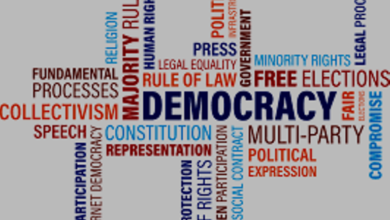BUDGET WILL NOT REVIVE OUR ECONOMY-A TOUGH TIME AHEAD -UMA SHANKER SINGH IFS

In 2019-20, which is the current financial year, the real gross domestic product (GDP) growth is expected to touch a six-year low of 5 percent. The situation is worse if one looks at nominal GDP growth, which is expected to fall to a 42-year low of just 7.5 percent. Real GDP is nothing but the nominal GDP minus the rate of inflation. Broadly, there are four engines that provide the power to drive GDP growth in an economy. These are:
1. Consumption of private individuals,
2. Demand for goods from the government,
3. Investments from businesses and
4. Net demand from exports and imports
We all know that with the passing year in the NDA government Indian government has been losing its engine of growth one by one. In the Indian context, private consumption demand accounts for roughly 57 percent of total GDP. Investments are the next big chunk, accounting for 32 percent.
Government spending is the smallest contributor, with net exports being negative for India. The corporate investment engine has been slowing sharply since 2011. This has happened because most businesses that took loans in the preceding decade, when the going was good, found their bets failing in the aftermath of the domestic financial crisis. As such, most businesses that could be expected to invest in the economy were hamstrung as they were severely over-leveraged.
The new businesses found that the financiers to the economy, that is the banks (especially the public sector banks, which accounted for 70 percent to 80 percent of all lending), were themselves struggling with non-performing assets. Many of these NPAs were the same loans that they had extended to the big businesses that were now hamstrung. This has been estimated that around 10-11 lakh crore of Bank’s NPA still remains unresolved.
The gross fixed capital formation is around 28.1% compared to more than 32% in 2011. This will be proper to mention that because of domestic bottlenecks and a middling global demand, net exports were struggling right from the inception of the NDA government. This trend was not helped by a renewed wave of trade protectionism across the world. That left only private consumption and government expenditure as the engines of growth.
Private consumption demand was first hurt in rural areas with poor commodity prices. While this meant that retail inflation was under control, the purchasing power of farmers declined. This weakness in rural demand was compounded by a collapse in urban demand after credit flow from the non-banking financial sector companies stopped following the meltdown in IL&FS.
This is being witnessed in the sales slump across the board from cars to shampoo sachets. Government demand carried the day for a considerable time. But with a sharp fall in revenues, thanks to a slowing growth, there is no way the government can spend without massively flouting the Fiscal Responsibility and Budget Management (FRBM) Act targets. The government’s idea of ‘reforms’ is to give small dollops of tax relief to taxpayers.
It was the corporate sector a few months ago; in this Budget, relief of Rs 40,000 crore has been given to personal income taxpayers. The FM also yielded to the pressure of the corporates and scrapped the Dividend Distribution Tax. There is no gainsaying the fact that DDT was an efficient tax and stopped all evasion of tax on dividend income. I am certain there will be a loss of revenue on the abolition of DDT. Tax experts, however, are not sure.
Many argued there was no substantial benefit across different levels of income for individual taxpayers and made the new regime more unwieldy and complicated. While the Finance Minister said there would be a revenue loss of Rs 40,000 crore if all taxpayers shifted to the new regime, the Budget has estimated personal income tax collections to grow 14 percent. Finance Minister said the restructuring of rates was the first move, and may over a period of time, replace the existing regime where exemptions on housing loans, provident funds, life, and health insurance, leave travel concessions, house rent allowance, and standard deduction are allowed.
The government hiked import duties on over 100 categories of products across sectors, including certain food items, furniture, footwear, household appliances, parts of mobile phones, and toys, continuing a progressively protectionist stance sparked over the last few years. This looks good to encourage domestic manufacturing sector but there are certain issues which really bewilders me as why import duty on certain items have been curtailed and levied on certain items, for example, the government is also taxing certain imported medical devices as part of a new health cess to set up hospitals in aspirational districts lacking healthcare facilities to support the NDA government’s flagship health insurance scheme for the poor but how will this be done as we are weak in manufacturing sector.
At the same time, the government has reduced duties on at least 15 categories of products, including, parts used to manufacture microphones, calendered plastic sheets used to make smart cards and certain sports goods and this will result in a heavy influx of Chinese goods in this area.
Secondly, where was the need for reducing import duty on purebred breeding horses as they will now carry no duty, while they used to carry 30 percent duty before this item and most importantly who uses those horses? Only rich people?. Solar cells, assembled in modules or made up in panels, will carry zero percent duty, starting February 2nd and this will certainly flood the Chinese solar cells.
Where is the make in India? Finance Minister on her budget speech proposed to extend provisions offering concessional corporate tax rates of 15 percent to new companies in the manufacturing sector to new domestic electricity generation firms.
On Sept. 20, 2019 finance minister had also announced a reduction in the country’s effective corporate tax rate from around 35% to 25%. For companies that do not avail of any other incentive or commission, the effective tax rate would be just 22%.
The current corporate tax rate cuts are more likely to impact the distribution of income than growth or employment. Companies will now get a larger share of profits from existing investments, while the economy remains on the slow lane. There is a very real danger that this would exacerbate inequality. The Union government also announced that all coal-fired power plants not meeting prescribed carbon emission standards will be shut down. There are about 80 coal-fired power plants all below 100 MW capacities are likely to be affected by the government’s decision. This is good from a climate change point of view but this again restricts our mining sector and employment will further shrink.
Finance Minister allocated Rs 99,300 crore for education a hike of 4.6 percent over Rs 94,855 crore last year. Of this, Rs 39,466 crore is set aside for higher education and Rs 59,845 crore for school education. The biggest chunk of the increase Rs 3,308 crore has gone to school education, leaving higher education with an additional Rs 1,149 crore. The research and innovation head has faced a 50-per cent cut compared to the budget announcement of 2019-20 from Rs 608.87 crore to Rs 307 crore. No money has been allocated for the Ucchatar Avishkar Abhiyan this year, a scheme launched by the NDA-2 government to promote industry-specific research in educational institutions.
My dear friends, how can a country progress when the government does not care for research? RSS-affiliate Swadeshi Jagran Manch opposed the Budget announcement that the government will encourage FDI in education, saying it is a “bad idea” and will lead to the “westernization” of education.
The rural and agriculture sector has been overlooked. Allocations in the Union Budget for various flagship schemes under the Department of Rural Development was marginally reduced to Rs 1.20 lakh crore for the year 2020-21 from Rs 1.22 lakh crore in 2019-20, while the funds allotted for employment guarantee scheme MGNREGA came down by Rs 9,500 crore during the same period. More allocation in MGNREGA must have created demand in the economy. This is not a big bang Budget by any measure. In essence, the government has tinkered with several different aspects of the economy. And that is where the threat to the bid for recovery lies.
There are many ways in which the plan can go wrong. What if private consumption demand doesn’t go up substantially? Or, what if the government is not able to raise the Budgeted revenues from tax and non-tax sources? This is especially true about disinvestment the government hopes to raise Rs 2.1 lakh crore in FY21, but it raised just about Rs 66,000 crore in FY20.

By Uma Shanker Singh IFS PHD
डिस्क्लेमर (अस्वीकरण):इस आलेख में व्यक्त किए गए विचार लेखक के निजी विचार हैं. इस आलेख में दी गई किसी भी सूचना की सटीकता, संपूर्णता, व्यावहारिकता अथवा सच्चाई के प्रति theJanmat.com उत्तरदायी नहीं है. इस आलेख में सभी सूचनाएं ज्यों की त्यों प्रस्तुत की गई हैं. इस आलेख में दी गई कोई भी सूचना अथवा तथ्य अथवा व्यक्त किए गए विचार theJanmat.com के नहीं हैं, तथा theJanmat.com उनके लिए किसी भी प्रकार से उत्तरदायी नहीं है..




